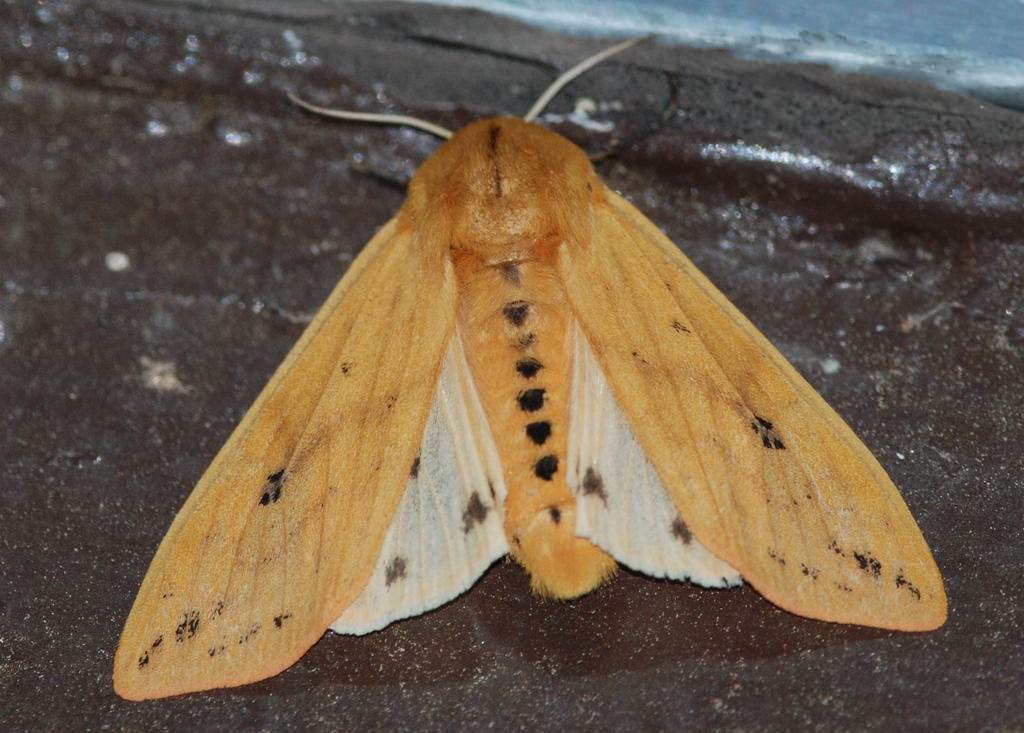Woolly bears are the larval stage of the tiger moth. There are more than 260 different species of tiger moths in North America; one of the most common is the Isabella tiger moth (Pyrrhactia isabella, pictured). The caterpillar will spend the winter in this stage, aided by its body’s ability to manufacture a type of antifreeze (glycerol) which will keep it alive during periods of freezing weather. It searches for sheltered nooks (such as cavities under tree bark) in which to hunker down for a long winter’s nap. When spring comes, the larva will feed briefly before spinning its silky cocoon and transforming into a beautiful tiger moth.
And what about the folklore that suggests that you can predict the severity of the winter ahead based on a woolly bear’s coat? Tune in tomorrow for the answer!
Author: Lisa Schneider
Photo: Dave Roberts


 RSS Feed
RSS Feed